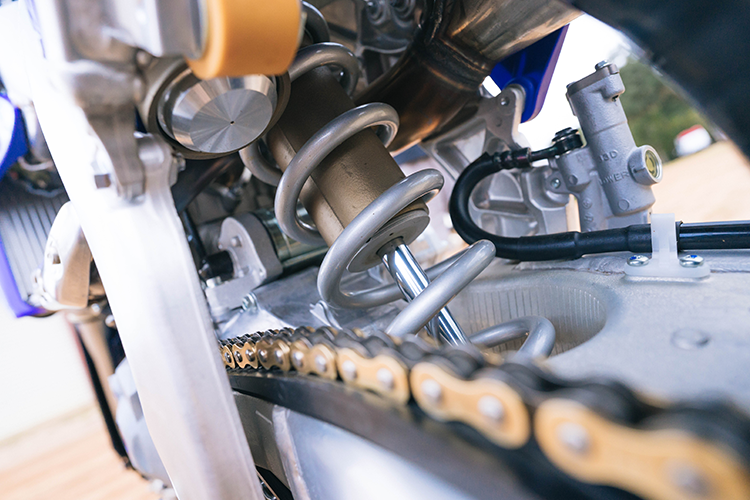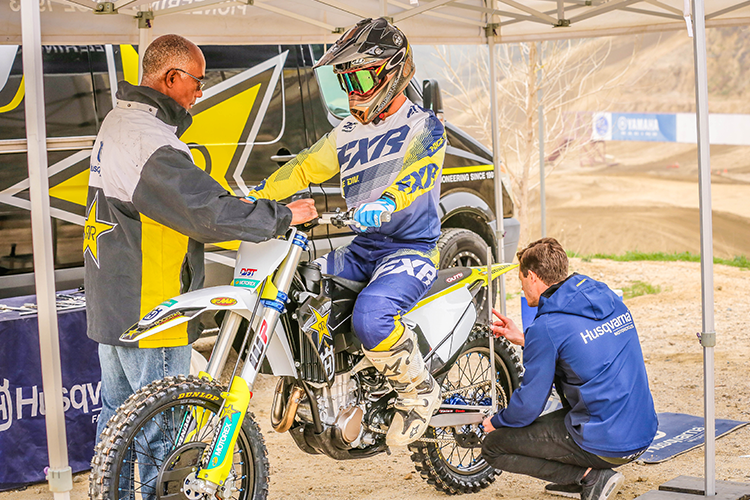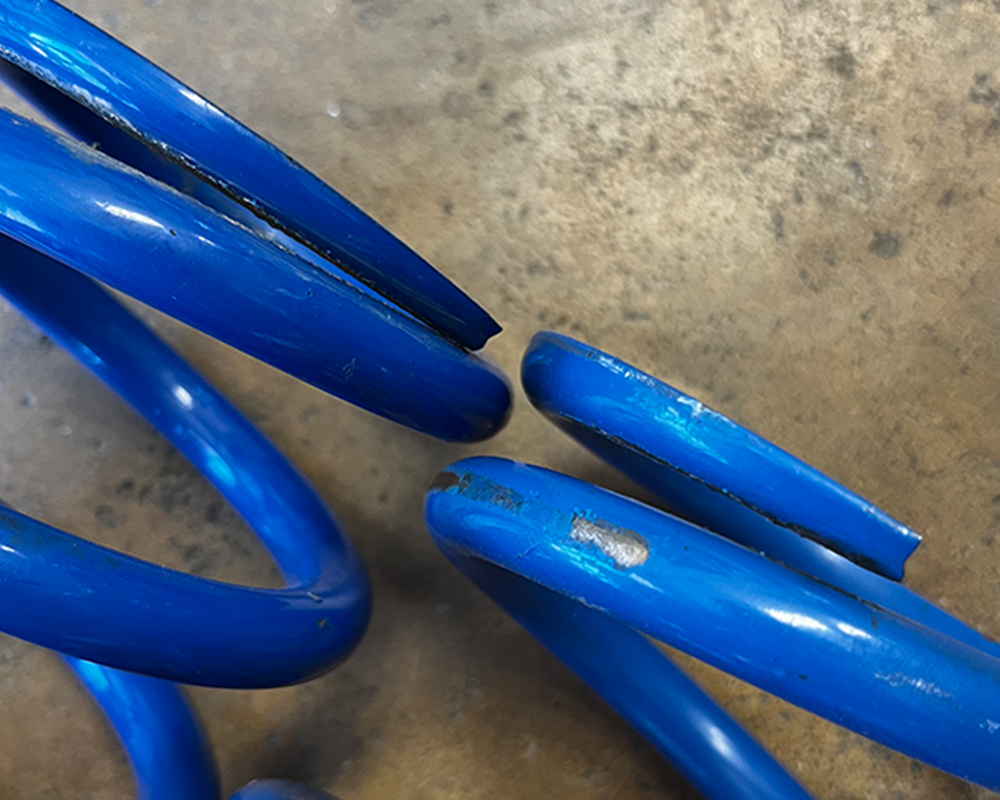We’ve been doing some suspension testing on our 2022 YZ450FX with TCS Powersports and, along with a few other bikes over the years, have been trying different springs before moving to complete revalves. In the process, we’ve learned some things about shock and fork springs and rates. We thought we’d pass this knowledge onto you so you too can make a better informed decision next time you’re looking to make some suspension changes.

So, how do springs work? If we have a 5.7kg/mm shock spring, it takes 5.7kg of force to compress that spring 1mm on a traditional, closed end spring. Simply put, it’s linear. On an open ended spring, it varies slightly as it acts as sort of a “progressive” spring. On average, it takes about 5.7kg to compress that spring 1mm, but not necessarily throughout the entire spring. In the beginning, it takes less force up until the open ends touch the spring. Once touching, the force then increases.
When adjusting sag, it takes a different amount of preload on the spring to achieve the same sag number between open vs close ended springs. For instance, on our YZ450FX test mule, it required 12mm of preload on the open spring to achieve 105mm of sag; meanwhile, the close ended spring only required 9mm of preload to get that 105mm number. The difference in preload changes how the bike works and reacts and depending on rider preference, it can be better or worse. It’s really just a different feel and neither is better or worse, just what you prefer as a rider.

The close ended spring, requiring less preload to achieve the desired sag, typically will remain flatter on decel and soak up smaller hits slightly better since there is less force initially on the spring. For those looking for a bike to feel neutral and avoid the rear end kicking up under braking, this could be the preferred spring for you.
The open ended spring, with more preload on it, is typically better on acceleration and bigger hits, not moving quite as much through the stroke as it has that firmer, tighter spring feel with it being cranked down more. If you’re hard on the gas and prioritize feel under acceleration, this might be the spring for you.

This same preload logic applies to different spring rates in general. Depending on your weight, you can typically find 2-3 shock spring rates that will work for your weight/speed, but achieving the same sag number will require different amounts of preload. A lighter spring will require more preload while a heavier spring will require less preload. As mentioned above, the amount of preload on a spring affects the handling characteristics of a bike. Even though the sag numbers will come out the same on paper, it can feel quite different on the track.
Next time you’re looking to do suspension work, do yourself a favor and experiment with the correct springs you need before diving into the deep end with a complete revalve, special parts, etc. Stock valving may be perfect for you, you could just need to fine tune it with the correct springs.

Do You Like DBT Bringing You Fresh Content? Search and Shop Through the Links Above or Below:


